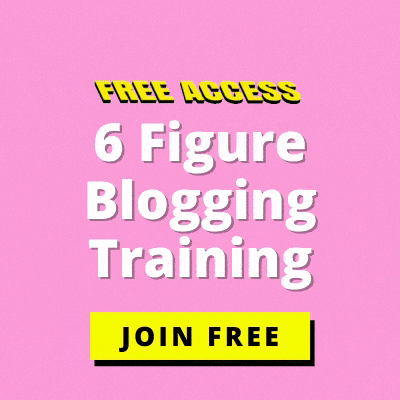You have probably heard or read about the debt snowball method and perhaps of the debt avalanche method and all you could think about is that white fluffy stuff everyone sings about during Christmas time.
Well, this has nothing to do with sleigh bells jingling to announce your latest debt and everything about debt reduction in a methodical and strategic way.
In this article I want to take the opportunity to help you get familiar with the debt avalanche method that can help you pay down your debt, while saving you a lot of money in the long run.
Read on to find out what the debt avalanche method is and how to implement it into your debt reduction and elimination.
Table of Contents
What is the Debt Avalanche Method?
When you use the debt avalanche method to pay off your debt you basically focus your payments on paying off the debt with the highest interest rate percentage first, regardless of its balance.
Once you have finished paying off that debt, you move on to the debt with the second highest interest rate percentage. You focus on paying that one off completely before turning your attention to the debt with the third highest interest rate percentage.
You may not see much progress towards your debt-free status at first, but the idea is as you continue to pay it picks up momentum.
How Does it Compare to the Debt Snowball Method?
The snowball method, on the other hand, concentrates on paying off the smallest debt amount first, before moving on to the next biggest amount that you owe.
So, instead of looking at the interest rate percentage that you get charged each month and using that as your starting point of paying off your debt, you look at the amount of each separate debt source and work yourself up in increments until all of your debt is paid completely.
Pros and Cons of the Debt Avalanche
Let’s start with the good news, shall we?
The good thing about the debt avalanche method to pay off your debt is that you save a ton of money, depending on the total amount you owe and the interest rate percentage the bank/loan company charges you.
By focusing on the debt with the highest interest rate percentage you are eliminating the biggest contributor to your growing debt, assuming you have stopped charging that credit line or credit card.
From a mathematical point of view it only makes sense to take care of the debt first that eats the biggest hole into your pocket, regardless of the actual total amount owing on the credit card or credit line.
None of us have any money to waste, so why give away thousands of dollars to a bank/loan company that tries its hardest to have you pay off that loan for as long as conceivably possible, while charging you an astronomical amount of interest.
The downside of this method is the fact that you will not see any significant progress for potentially a longer time than you have the nerves to wait.
The debt avalanche method requires patience, motivation and focus on the bigger picture: paying off that debt in the most financially logical way possible and saving money in the long run.
It feels good to put a check mark behind a debt that has finally been paid off. It’s a boost to your self-confidence. It makes you happy and makes you feel like you are getting somewhere, but that check mark may take some time before it can make an appearance with this method.
So, I consider this the self-directed and self-motivated method of debt elimination. If you are willing to keep working on it, the rewards will speak for themselves.
How to use the Debt Avalanche Method
Step One
List all of your sources of debt, for example your various credit cards, credit line, car lease, student loan, etc. from the one with the highest interest rate percentage to the lowest, regardless of the dollar amount owing.
Step Two
Continue to make minimum payments to all sources of debt except to that with the highest interest rate percentage, which would be at the top of your list you made during step 1.
The amount you pay to that debt source should be carefully calculated based on your income and the budget you have created for your household.
Step Three
Once you have paid off the first debt source on your list, move down to the debt with the second highest interest rate percentage. Continue to pay the minimum amount on all other remaining debt sources, while paying the minimum plus that which you have paid to the first debt to the current debt source.
For example: you have just finished paying off your Visa credit card, which had an interest rate percentage of 25%. You decided you could afford to make monthly payments of $500.
The next debt on your list is your line of credit with an interest of 21.5%. To that line of credit you will now pay the minimum amount you have paid to the line of credit until now plus the $500 you had designated to your Visa card, which is now sporting a glorious balance of $0.
You continue to apply this principle until you have paid off every last your debt sources, thus creating a metaphorical debt payment avalanche.
Stay Motivated
I know the hardest part is to stay motivated when the progress is barely noticeable.
You may ask yourself why you should work your butt off, making all those diligent payments when it hardly makes a dent in your total amount of debt you owe.
Consider this the very profitable and long-term investment into your future and debt-free self.
As I describe the process above in step number 4, this method is slow to start, but once it gets moving the positive impact it will have on your debt reduction and elimination will be worth it.
Final Thoughts
Just this morning I double checked my own progress towards paying down my student loan and was greatly displeased by how much the interest charges are eating away at my progress towards paying it off completely.
It feels like a constant race between my bi-weekly payments and the bank’s interest charges, trying to keep my student loan at a teeth-grindingly large sum.
So, why pay the bank or creditors more money than absolutely necessary? If there is a way to make sure you can save yourself thousands of dollars and time by getting rid off your debt faster, why not do it?
Dealing with your debt can be stress inducing and uncomfortable to deal with, but the sooner you tackle this obstacle standing between you and financial freedom, the better.




Leave a Reply